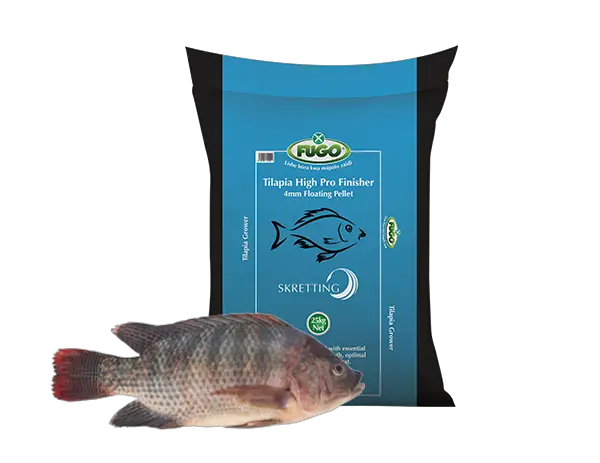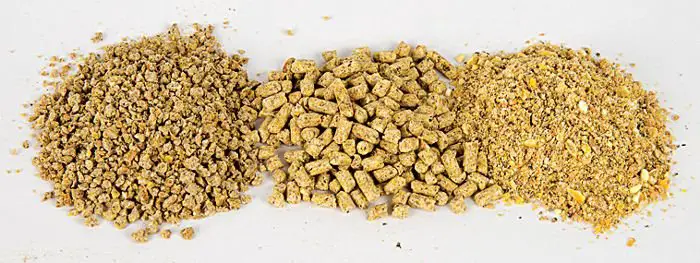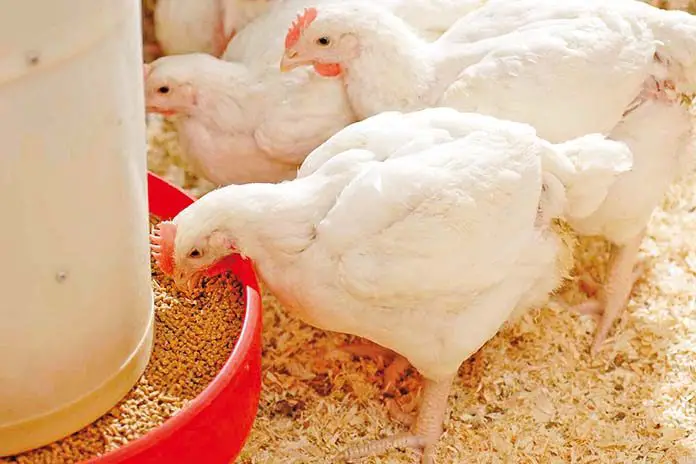Tilapia are fast becoming the most dominant fish species in aquaculture, ranked fourth most consumed fish in the United States. Often referred to as the aquatic chicken, tilapia are incredibly easy to feed on most feed resources compared to most fish raised in aquaculture that are mostly carnivorous like trout. Tilapia are hence mostly herbivores feeding of natural materials in their natural environment. The word tilapia comes from the Tswana word, tlhapi, which means fish and 3 main breeds are important for aquaculture the Nile, Mozambique, blue tilapia, and cross breeds of these three. Tilapia is a fast-growing and mild-tasting fish that has been raised by humans since ancient times and always been a part of human diets ever since. Some Nile tilapia are known to grow to over 2 feet in size, this ability to grow fast on a wide variety of feeds makes tilapia an ideal fish to raise in warm waters across the globe.
Contents
Tilapia Feed Ingredients
Most tilapia feeds were originally designed to utilize wastes from other agricultural practices for example tilapia can be raised on chicken or pig waste fertilizing ponds to grow algae, aquatic plants, and insects which the tilapia can feed off. So in essence tilapia do not feed on mature but the aquatic species that grow from the added fertilizer in the pond. In fertilized ponds the tilapia fish growth is a bit slow, harvest at six months, so balanced commercial feeds have been developed. Commercial feeds are made primarily from soybean meal, fish meal, maize/corn, brans of maize, rice, and wheat. These feeds will cater for the juvenile to adult fish and are available in pelleted or extruded pellet form.
Table 1 Tilapia Pond Feed Sources By Age
| Age | Preferred Pond Feed Material |
| Fry | Detritus, are organisms that float on the pond water surface |
| Fingerlings | Detritus and periphyton. This is a diverse mix of algae, cyanobacteria, and heterotrophic microbes attached to submerged plants and objects. |
| Adults | Algae, bacteria, detritus, duckweed, and aquatic plants |
There are some differences also in the feeding habits of the 3 common farmed tilapia breeds Nile, Mozambique, and blue tilapia. The breeds prefer phytoplankton, bottom algae, and Zooplankton respectively.
Tilapia Commercial Feed Specifications
Juvenile or fry tilapia mostly feed on microorganisms like zooplankton and natural plant material in ponds, a protein-rich powder mostly comprised of fish or bone meal can also be fed to the tilapia at this stage. As the tilapia grow their protein requirement decreases, which makes their feed cheaper as the feed grow. Commercial feeds are balanced for other essential nutrients like energy, fats, vitamins, and minerals. Tilapia will consume 3-5% of their body weight and should be fed at least twice daily checking if the fish are consuming the feed. The presentation in terms of pellet size will increase as the fish also grow. Below is a typical tilapia feeding program for commercial tilapia feed.
Table 2: Tilapia Feeding Guide
| Product | Presentation | Protein % | Feed Duration | Feed Required | Fish Size | Feedings per Day |
| Fry | 0.1 to 0.7mm | 45% | 0-12 | 10kg | <1g-15g | 8-6 |
| Juvenile 1 | 2mm | 40% | 13-16 | 35kg | 16-50g | 4-6 |
| Juvenile 2 | 3mm | 36% | 17-20 | 75kg | 51-100g | 4-6 |
| Grower | 4mm | 32% | 21-34 | 250kg | 101-300g | 3-5 |
| Pond | 4mm | 18% | 21-34 | 200kg | 150+ | 3-5 |
Floating vs Sinking Pellets
Tilapia are difficult to classify as whether they are bottom or surface feeders as they feed on a wide array of feeds but mostly vegetation. Tilapia will eat almost anything so they can eat on the surface or dig at the bottom of the pond for feed. Commercial feed for tilapia is mostly in pellet form and the pellets can either be pelleted sinking or extruded floating. The difference between the two comes from the processing, normal pelleting compresses all the feed ingredients into a hard pellet, these do not have air pockets so when put in the pond will sink to the bottom. Extruded pellets float because the extrusion process produces pellets with a lot of small air pockets. Feeding floating pellets has the advantage that the fish feeding behavior can be monitored as the fish come to the surface to feed. When tilapia are also raised in cages any sinking pellets not consumed quickly by the fish will fall out of the cages, and be wasted. If consumption is slow the farmer can reduce the feed allowance or check if the fish are not sick. Floating fish pellets are more expensive than sinking but the reduced wastage could pay for the extra cost of the feed.
Alternative Feeds for Tilapia
We have looked at pond culture utilizing manure to encourage aquatic life growth that tilapia can feed on and commercial feeds, alternatives or supplements can also be fed to tilapia to bring feeding costs down. The choice of alternatives to feed mostly depends on locally available feed resources where the tilapia are being raised to produce low-cost feed. Tilapia can be fed on cassava or sweet potato leaves, coffee pulp, papaya, and other waste products from agricultural products processing. Some tilapia feeds can be made from a combination of most of these wastes, helping fertilize the pond and also providing nutrition for the tilapia, below is an example of a low-cost feed for pond-raised tilapia.
Table 3: Tilapia Pond Feed Formulation
| Ingredient | Inclusion Level (%) |
| Dry Pig/ Cow Manure | 50 |
| Maize Bran | 37 |
| Soybean/ Sesame oil Meal | 10 |
| Fish Meal | 2 |
| Meat and Bone Meal | 1 |
Tilapia Feed Management
Care should be taken when feeding tilapia so that the feed offered does not affect the water quality of the pond correct amounts should be fed according to fish size and numbers. Sometimes too much feed or wrong feed added to the pond will sink to the bottom, and rot at the bottom of the pond reducing the oxygen and pH levels of the pond water killing the fish. Overfeeding leads to feed wastage and underfeeding leads to slower growth rates both issues have an effect on the profitability of the enterprise.
Tilapia are relatively easy fish to feed and raise and can be raised on natural aquatic pond organisms and agricultural waste with good results. The choice of ingredients is quite varied which gives the farmer the advantage of choosing cheap locally available ones for this list to raise tilapia




